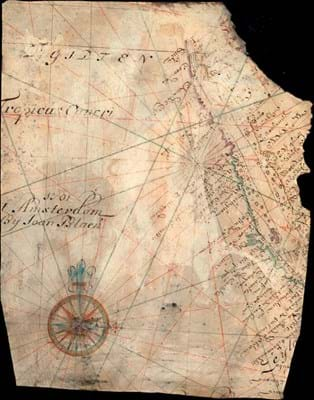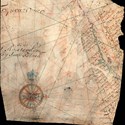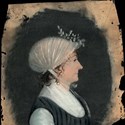Part of a Haarlem auction held by Bubb Kuyper (21% buyer’s premium) on May 26-29, it bore on one side of the foot-high, irregular-shaped piece of vellum a portrait of an unknown lady. It was this that prompted the owner to send it to auction, but a map on the other side proved the key to success.
Whether there is any connection between the map and the portrait, thought to date from the early 19th century, is unknown but the saleroom recognised at once that the chart showing part of the Gulf of Suez and the Red Sea was the real attraction.
However, there were uncertainties concerning its date and origins.
The auction house was unsure whether it was a preliminary drawing, a discarded draft or a copy.
The name and the date on the chart seemed to indicate that it was the work of cartographer and publisher Joan II Blaeu (1650-1712), a grandson of the renowned Dutch mapmaker Willem and son of Joan Willemsz Blaeu. But the date of 1701 it bore was confusing.
By that time the Blaeu family business, which had suffered a devastating fire, was already closed and the remaining inventory had been been sold off in 1677.
Manuscript maps by members of the Blaeu family are, however, very rare, and after a contest between several phone bidders that very modest estimate was demolished.
East Indies work

A view from the complete copy of Valentyn’s 'Oud en Nieuw Oost-Indien' sold for €32,500 (£29,280) at Bubb Kuyper.
A more predictable success in the Haarlem sale, at a mid-estimate €25,000 (£22,400), was a complete copy of Valentyn’s Oud en Nieuw Oost-Indien.
The five parts of this 1724-26 work on the Dutch East Indies, containing 263 maps, plans, views, etc, along with numerous text illustrations, were uniformly bound in contemporary vellum.

















